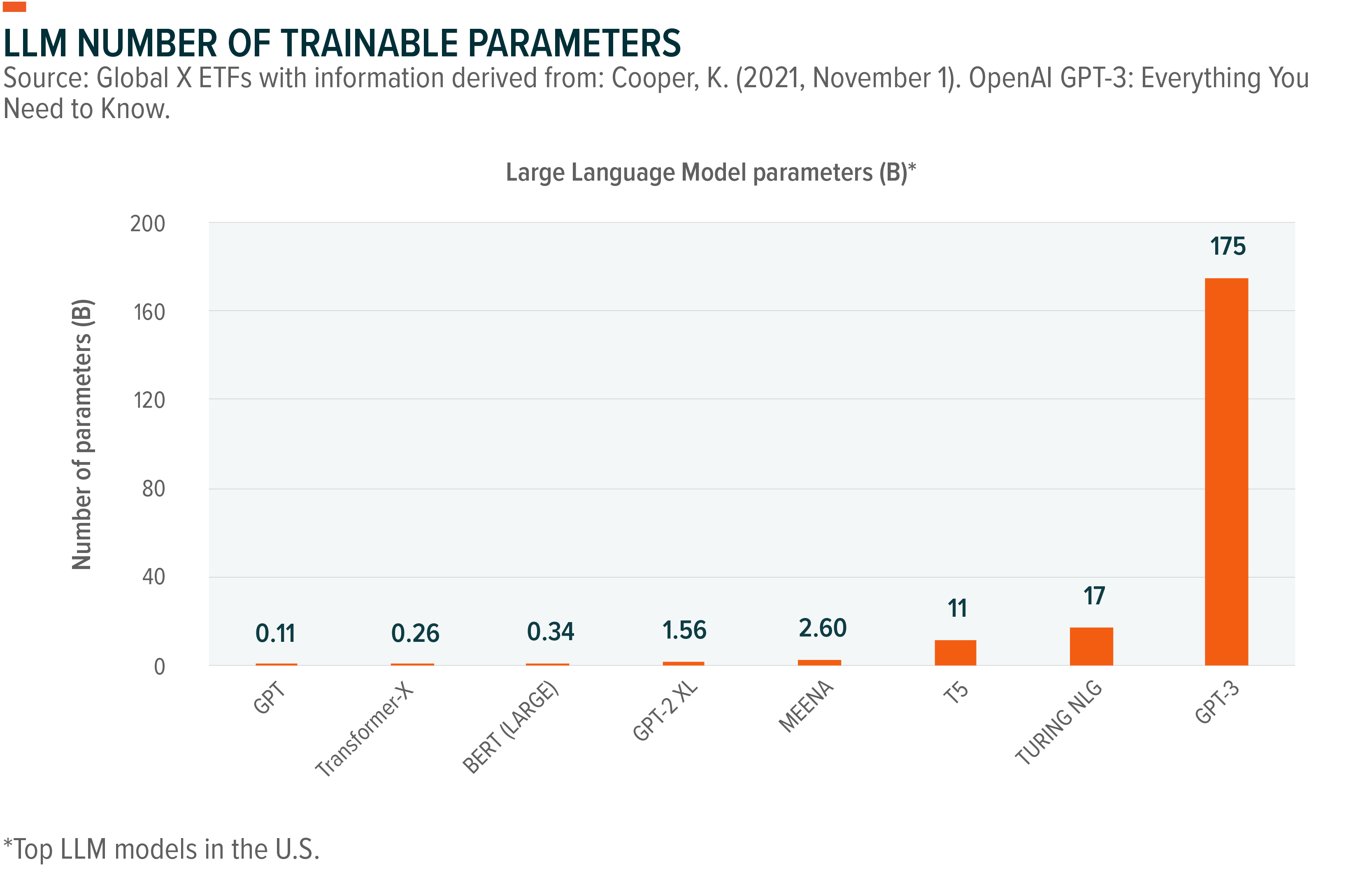Assessing the Field: Exploring the Competitive Landscape of Generative AI
PreviewThe competitive landscape of generative artificial intelligence (AI) is rapidly evolving and becoming increasingly crowded, as companies and research institutions invest heavily in this cutting-edge technology. The goal of generative AI is to produce new, original content that can be used in a wide range of applications, such as image and video creation, natural language processing, and music composition.
There are several key players in the generative AI space, each offering different approaches and solutions. Some of the most prominent companies include OpenAI, Microsoft, Google, Meta Platforms, IBM, and others. These companies are investing heavily in research and development in this area and have produced some of the most advanced generative AI models to date. In this piece, we’ll explore the competitive landscape of generative AI.
This piece is part of our Generative AI series of research. To access all our research on the topic, click here.
Key Takeaways
- To fully understand the competitive landscape of generative AI, it is important to explore its origins and the technological advancements that led to it.
- Though Microsoft was first to announce ChatGPT’s integration into Bing, potentially disrupting the search market, there are reasons to believe that the search engine is not currently posing a serious threat to Google’s dominance.
- Other companies, including Meta Platforms, as well as China’s big tech players, like Baidu, Alibaba and Tencent, have been developing similar projects internally, which they are planning to launch soon.
The Technological Advancements That Led the Way to ChatGPT
Though generative AI systems based on large language models (LLMs), such as OpenAI’s extremely popular ChatGPT, may seem like sudden technological breakthroughs, these have been several years in the making. In fact, developments in the space accelerated soon after Ian Goodfellow, a former Google Brain research scientist, came up with the generative adversarial network (GAN), a type of machine learning framework, in 2014. This was when big heavyweights like Google, Microsoft and IBM kicked-started working on it.1 This type of machine learning framework forms an important part of the development of generative AI, specifically when applied to image recognition. It is based on two neural networks – a generative network and a discriminative network, which contest with each other in a way that enables the model to learn in an unsupervised manner. This is an important building block of generative AI.
Another technological advancement that became a significant enabler of generative AI was the introduction of the Transformer model in 2017, which was developed once again by a team of Google Brain researchers.2 The Transformer is a deep learning model that improves on recurrent neural networks (RNNs) by being able to process an entire input of data, such as natural language, as opposed to processing the input data sequentially. This leads to a significant reduction in training times, and hence improved efficiency when applied to tasks such as text summarization and translation. This advancement is what formed the basis for the development of both Google’s BERT (Bidirectional Encoder Representations from Transformers) and OpenAI’s GPT (Generative Pre-trained Transformer) pretrained systems.
OpenAI’s team built and improved upon GPT with GPT-3, which follows on from GPT-2 and contains a staggering 175 billion parameters.3 (In this context, a parameter is a value that controls the behavior of a machine learning model.) This compares to GPT-2’s one billion parameters. For reference, a model with six billion parameters is called “prompt engineering,” which is where the model learns a little bit, while 30 billion is the level where models can generate sophisticated language-related output.4 Finally, OpenAI’s latest iteration, GPT-3.5, is what formed the basis for the now well-known ChatGPT.

Bing It? Not So Fast
Fast forward to today, OpenAI is one of the leading companies in the field of generative AI. Its GPT-3.5, which is considered one of the most advanced language models to date, is capable of generating coherent and grammatically correct sentences and paragraphs. OpenAI has also developed several other generative models, such as DALL-E, which can create unique images from textual descriptions, and Codex, which can write computer code. The success of these models, and Microsoft’s billions of dollars in investment in OpenAI, started raising questions about Google’s long-time dominance of the search market.
However, although Microsoft’s recent announcement of integrating ChatGPT into its search engine, Bing, caused a stir in the market, there are several reasons why we believe that Bing will likely not pose a significant threat to Google’s near-monopoly in the search market.
- First, ChatGPT is frozen in time, meaning that it was trained on a certain snapshot of the internet in 2021. Therefore, it doesn’t know of recent events like the war in Ukraine, nor does it know or understand the implications that follow on from these events. To put this in the context of search – this is a service that requires relevancy and up-to-date information, with constant near-real-time updates. As of this moment, it is not clear when ChatGPT will be able to achieve this.
- Second, at present, the Google search engine has two main advantages over Bing: it is better at responding to obscure user search requests and providing relevant links, and it is better at inferring what the user is looking for when the search request is ambiguous or unclear. Together, these two characteristics form the main reason behind why Google search is still the preferred option for most users today.
Other Emerging Competitors
Meta Platforms has also been making significant strides when it comes to AI algorithms, though that has mostly gone under the radar. The company is also applying a slightly different approach called neuro-symbolic AI, on which its Cicero algorithm is based.5 This approach combines disciplines that are already widely used within the field of AI, such as deep learning for specific tasks, as well as rules-base software that does the reasoning.6
This contrasts with the approach used by OpenAI, which involves using as much training data and computer processing power as possible. Recently, Meta’s Cicero scored amongst the top 10% of human players at the online game Diplomacy, where it is faced with dealing with unstructured environments, such as dialogue, involving negotiation and persuasion.7 This makes the neuro-symbolic AI approach perhaps better suited to solving complex problems.
China’s tech giants, like Tencent, Baidu, and Alibaba, were also quick to join the generative AI trend, recently announcing plans to test and launch their own ChatGPT-like services soon. For example, Baidu, which dominates China’s search engine market, announced plans to release Ernie Bot, its own version of ChatGPT, which caused the company’s shares to surge to an 11-month high in February.8 Baidu said the underlying technology has been in development since 2019 and that it plans to make the chatbot accessible to the wider public after completing internal testing in March.9
Conclusion
Currently, some of the largest tech companies, such as the ones discussed here, are investing heavily in generative AI and developing new products and services in this area. Due to their research capabilities, financial strength, and current market position, it is possible a handful of large companies could dominate the field for building generative AI models, though new players could also emerge, particularly in domain-specific areas. Also, there are likely to be a wide array of winners from this emerging technology, including hardware manufacturers. One thing that’s clear is that generative AI has the potential to be a powerful tool for businesses and individuals, and that it will likely play an increasingly important role in a wide range of industries and applications in the future.
Related ETFs
AIQ – Global X Artificial Intelligence & Technology ETF
BOTZ – Global X Robotics & Artificial Intelligence ETF
Click the fund name above to view current holdings. Holdings are subject to change. Current and future holdings are subject to risk.


